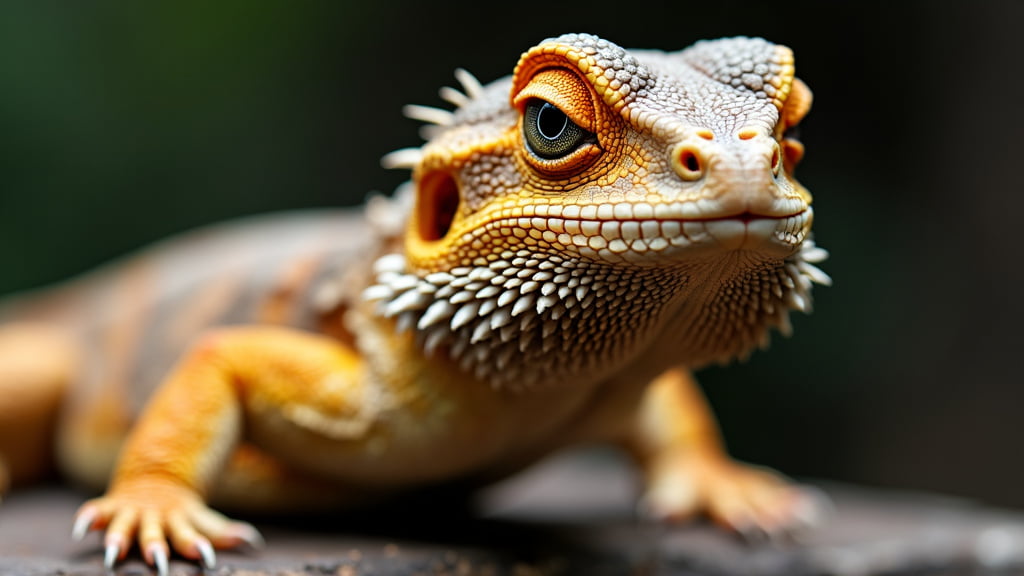Signs of Old Age in Bearded Dragons
Meta Description: Discover the signs of old age in bearded dragons. Learn how to spot common age-related health issues and keep your ageing dragon comfortable. Expert tips included.
Introduction
As a proud bearded dragon owner, watching your scaly friend grow and thrive is one of the most rewarding experiences. However, like all pets, bearded dragons age, and their needs change over time. Identifying signs of old age in your bearded dragon is crucial for ensuring they live a comfortable, fulfilling life. In this post, we’ll explore the tell-tale signs of ageing in bearded dragons and provide practical advice on how to care for your senior lizard.
Recognising Physical Changes
As bearded dragons grow older, their physical appearance and behaviour may change.
Thinning Tail and Limbs
One of the most noticeable signs of old age in bearded dragons is a thinning tail and limbs. When my dragon, Spike, hit around ten years old, I noticed his once robust tail began to look thinner, and his limbs weren’t as muscular. This is a common sign of muscle loss, which can occur as their metabolism slows with age.
Dull Colouration
Ageing bearded dragons may also exhibit duller colouration. Vivid hues often fade, giving way to more subdued tones. For dragons like my old girl, Sandy, this dullness was most apparent during her later years. While this isn’t necessarily harmful, it’s a clear sign they’re getting older.
Weight Fluctuations
Elderly bearded dragons can experience weight fluctuations, often losing weight due to a decreased appetite. Observing their diet and adjusting feeding schedules can help manage this. Frequent check-ups with a vet can also preempt serious issues related to weight loss.
Retaining Shedding Skin
Young bearded dragons shed frequently and usually without issue. However, older dragons may have difficulty shedding completely. You might find remnants of old skin on their tails or limbs. I’ve dealt with this by regularly giving my ageing dragons gentle baths and lightly brushing the retained skin.
Behavioural Shifts
In addition to physical changes, you’ll notice some behavioural shifts as your dragon ages.
Reduced Activity Levels
Younger bearded dragons are usually active and curious, but older ones tend to slow down. Don’t be alarmed if your dragon spends more time basking under their heat lamp and less time exploring their enclosure. My dragon, Rex, preferred the warmth of his rock rather than his climbing logs as he aged.
Longer Rest Periods
Older bearded dragons are likely to take extended naps. This is entirely normal and is just their way of conserving energy. Creating a comfortable and warm resting area will help them feel secure and cosy.
Changes in Eating Habits
Expect changes in eating habits as your bearded dragon ages. Some may become picky eaters or develop a preference for softer foods. Incorporating a variety of diet options, such as blended fruits and vegetable purees, ensures they get their necessary nutrients without struggling to eat harder foods.
Health Concerns
Old age in bearded dragons inevitably brings about health concerns. Proactive care and regular vet visits can make a world of difference.
Arthritis and Mobility Issues
Arthritis is common among ageing bearded dragons, leading to stiffness and reduced mobility. I’ve noticed my older dragons struggle with climbing, something they previously did with ease. Providing ramps or lower basking spots can help them stay active and comfortable.
Vision and Hearing Loss
Just like humans, bearded dragons can experience vision and hearing loss with age. If they seem less responsive to movement or sound, it’s likely due to diminished senses. Ensuring their habitat is safe and free from hazards can prevent accidents.
Respiratory Issues
Elderly dragons are more susceptible to respiratory infections. Signs include wheezing, laboured breathing, and nasal discharge. Maintaining a clean environment with proper humidity levels can help prevent respiratory problems. Always consult a vet if you notice these symptoms.
Metabolic Bone Disease (MBD)
Older bearded dragons are at risk of Metabolic Bone Disease, which can result in soft or brittle bones. Adequate UVB lighting, calcium, and vitamin D3 intake are crucial to prevent MBD. I’ve found that keeping a close eye on their diet and light exposure can make a significant difference in their health as they age.
Conclusion
Recognising the signs of old age in bearded dragons is essential for providing them with the best care possible. Whether it’s monitoring their physical changes or adjusting to their new behavioural norms, small steps can ensure your beloved pet enjoys its golden years. Always remember to consult a vet for any serious concerns, as professional guidance is key to addressing complex health issues.
By understanding and adapting to these ageing signs, you can help your bearded dragon lead a comfortable, happy life even in its senior years. So, keep a close eye on your scaly friend, and cherish every moment you get to spend with them.
For more tips on caring for bearded dragons, visit our Comprehensive Care Guide.
Also, check out this product for essential supplies for your bearded dragon.
By keeping these observations and tips in mind, you’ll ensure your ageing bearded dragon remains healthy and content.

